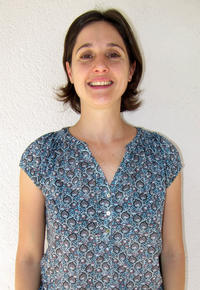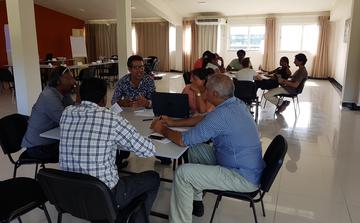High quality sectors: supporting actors towards labels or collective marks
Members of cooperatives, producers, processors, retailers... There were about 40 to have followed a methodological workshop in order to valorize the quality and / or the origin of their products.
As part of the Interreg-V Qualinnov 2 project, the Institute of Quality and Agroecology (IQUAE) has organized multi-sector workshops in Madagascar, Mauritius and the Comoros to support the stakeholders in these sectors in collective dynamics of valorization by quality and/or origin.
"The objective is to provide the participants with the knowledge and tools necessary to identify the most appropriate valorization approach in terms of quality, depending on their activities and the target market " says Julie Gourlay, development engineer at IQUAE, who led these workshops. This can take the form of a Geographical Indication (GI), especially for heritage productions such as vanilla or coffee, but also as collective marks.
"A collective mark is a mark used by several economic operators who all comply with the same regulations governing the use of the mark. By including a specification with qualitative criteria, we obtain a quality approach. "Nou la fé" or "Made in Moris" are examples of collective marks. It's much faster and easier to set up than a Geographical Indication. On the other hand, it does not provide any legal protection of the denomination (it is the right of the marks that applies). Setting up a collective brand can be interesting as a first step before setting up a GI. It is also necessary that the system of GIs at the regulatory level is in place in the country, which is not the case in Madagascar or Mauritius”, Julie explains.
Four workshops to explore multiple opportunities
In total, four workshops on labels and collective brands are planned within the Qualinnov 2 project, three of which have already taken place in 2018 and 2019.
In Madagascar, the workshop which gathered about fifteen people in October 2018 was the follow-up of the works initiated in 2017. The participants exchanged on the evolution of the GI on several sectors in Madagascar and proposed that the first test file for a GI is the Vanilla of Madagascar. Other opportunities were also discussed, including a project to promote a basket of products from a specific region of Madagascar and a project on organic farming specific to Madagascar.
In the Comoros, in November 2018, the participants explored opportunities to enhance the value of 3 emblematic agricultural products: Ylang Ylang essential oil, vanilla and lychee. This workshop was an opportunity to discuss the implementation of a sustainable vanilla GI of the Comoros, whose specifications were developed by the National Office of Vanilla (ONV). In short, it emerged that the Comoros is the cradle of exceptional products that could benefit from a Geographical Indication to protect their denomination and to identify them on the international market.
In Mauritius, in April 2019, the discussions focused on the scenarios for valorizing local garlic and the products of the "Smart Agriculture" project. Producers of pilot farms want to highlight the change of practices within their farms by communicating with consumers with a quality approach. Regarding the local garlic, a collective structuring of the producers and the establishment of an identification of this product with the consumers could allow a highlighting of this product known for its spicy taste and its medicinal and nutritional properties compared to imported garlic that is predominant on the Mauritian market.
Thanks to this meeting, Natacha Prayag, agronomist assistant in Senneville, understood how to better position her products for customers. "The training allowed me to identify the type of valorization that will best suit the product and the type of customer I want to reach. I had already prepared a specification for lettuce, which has been adapted during the workshop to meet our customers’ expectations. "
This is a great opportunity for participants to reflect on their products, their organoleptic qualities, their marketing, the expectations of consumers and to determine priorities for action in the various sectors.
Published: 15/05/2019


